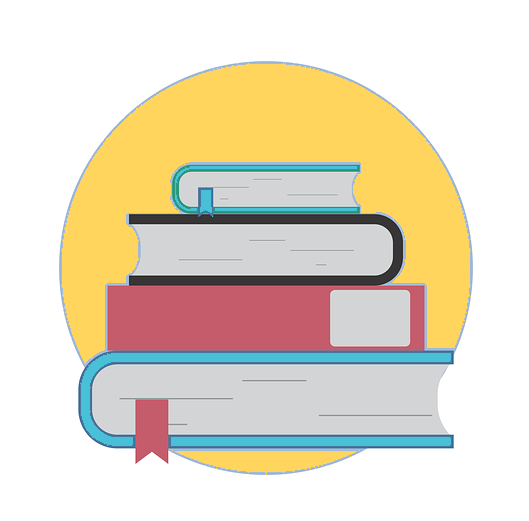94
Although you can find a variety of educational resources online, just because a resource is available on the web it does not mean that the resource is available for you to use. In this section, we’ll discuss different aspects of what makes a resource open and a few different factors that may impact an OER’s reusability. Let’s start with the following short introduction video for an overview of what we mean by the “open” in open educational resources, and the “5Rs of open”.
As was mentioned during the video, open is not a binary attribute (in which a resource is either open or it’s not) but rather a spectrum that asks how available and editable a resource is. David Wiley, whose scholarly work has influenced the open education movement, proposes that a truly open resource can be reused in its original format, copies of the resource can be retained for personal archives or references, and the resource can be modified or altered to suit specific needs. It can also be adapted with other content to make something new, and it can be shared with anyone else in its original or altered format.
Browse through the 5Rs of OER in the section below. We have included some questions and activities to connect OER and the 5Rs to your current disciplinary practice and context.
The 5Rs of OER
Open Educational Resources provide teachers, learners, and others with legal permissions to engage in these 5R activities:
Reuse
Reuse refers to content that can be reused in its unaltered, original format. This involves the right to use the content in a wide range of ways (e.g., in a class, in a study group, on a website, in a video).
Revise
Revising allows OER to be adapted, adjusted, modified, or altered. These revisions can range from translating the language of an OER to adapting it for your teaching and learning context. Revising enables instructors and faculty to make changes to OER and open textbooks to adapt the format and content for their course. Revisions may include changing the format of the OER or adapting the OER to your teaching, learning, and disciplinary context.

Dig Deeper
For more in-depth information on revising open textbooks, read Modifying an Open Textbook: What You Need to Know.
Remix
Remixing OER refers to combining the original or revised content with other materials to create something new. One example of remixing is mashups and remixes. Remixing open educational resources involves combining resources like open textbooks and media into something new. One example of remixing is the creation of open textbooks through the remixing of different open textbook sources. For example, you could develop a new open textbook by remixing media and content from different OER.

Dig Deeper
For step by step instructions on remixing content, read the ISKME’s Teachers and Makers Remix Lab 2013.
Redistribute
Redistribute means that content can be shared with anyone else in its original or altered format. Users have the right to share copies of the original content, their revisions, or their remixes with others. For example, they can share them directly with other individuals or post them on websites.
Retain
The 5th R (Retain) was introduced seven years after the 4R’s (reuse, revise, remix, and redistribute) were identified. As the cost of textbooks has been climbing, institutions have been trying to make books more affordable by decreasing access to them (buyback, rental, subscription, digital rights management).
Retain refers to making, owning, and controlling copies of the content (e.g., download, duplicate, store, and manage). Consider a publisher eBook that you purchase. Depending on the contract you may not have permission to download multiple copies of the text, and you may only be able to use the text in certain formats. Compare this to an open textbook that you can retain. You can access the open text, download it, make copies of it, and control your own copy.
Creative Commons Licensing
As we discussed in the Creative Commons module, CC licenses provide legal permissions to access and use resources in specific ways. While a free and perpetual granting of the 5R permissions by means of an “open license” qualifies a creative work to be described as open content, many open licenses do place requirements (e.g., mandating that derivative works adopt a certain license) and restrictions (e.g., prohibiting “commercial” use) on reuse of the work. The inclusion of requirements and restrictions in open licenses make open content less open than it would be without these requirements and restrictions.
Open Formats
While open licenses provide users with legal permission to engage in the 5R activities, many open content publishers make technical choices that interfere with a user’s ability to engage in those same activities

Scenario – What is the consequence of not using an accessible format?
Let’s consider this scenario: Erina found a CC-BY licensed infographic that provides information about the food supply chain in the US. They want to modify the infographic so that the infographic fits in a Canadian context. However, the infographic is only available in PDF format so Erina cannot edit the image. In the end, they decide to not remix the infographic and create a new infographic from scratch.
In this situation, the creator wanted someone like Erina to be able to revise the work, but they didn’t share it in a way that makes revising easy to do. What would make it easier for Erina to reuse to work?
The ALMS Framework provides a way of thinking about technical choices and understanding the degree to which they enable or impede a user’s ability to engage in the 5R activities permitted by open licenses. Specifically, the ALMS Framework encourages us to ask questions in four categories:
- Access to Editing Tools: Is the open content published in a format that can only be revised or remixed using tools that are extremely expensive (e.g., 3DS MAX)? Is the open content published in an exotic format that can only be revised or remixed using tools that run on an obscure or discontinued platform (e.g., OS/2)? Is the open content published in a format that can be revised or remixed using tools that are freely available and run on all major platforms (e.g., OpenOffice)? In the scenario above, one way the creator could make it easier for Erina to reuse the work would be to provide a format that easily allows for adaptations or remixing. The creator of the infographic could have provided an .eps (vector file) file format of the infographic in addition to the PDF format so that it will be easier for Erina to modify the infographic.
- Level of Expertise Required: Is the open content published in a format that requires a significant amount of technical expertise to revise or remix (e.g., Blender)? Is the open content published in a format that requires a minimum level of technical expertise to revise or remix (e.g., Word)? In the scenario above, if the creator has created a fancy infographic with complex JavaScript animation, it would still be hard for creators like Erina to edit the work.
- Meaningfully Editable: Is the open content published in a manner that makes its content essentially impossible to revise or remix (e.g., a scanned image of a handwritten document or a PDF of a scanned document without optical character recognition)? Is the open content published in a manner that makes its content easy to revise or remix (e.g., a text file)? In the scenario above, if the creator of the infographic has used the creator’s handwritten text, it would be hard for creators like Erina to replicate the text.
- Self-Sourced: It the format preferred for consuming the open content the same format preferred for revising or remixing the open content (e.g., HTML)? Is the format preferred for consuming the open content different from the format preferred for revising or remixing the open content (e.g. Flash FLA vs SWF)? Going back to the scenario above, if the creator of the infographic has only provided an .ai(illustrator) file for their infographic, creators like Erina will need an access to Adobe Illustrator in order to edit the infographic.
Using the ALMS Framework as a guide, open content publishers can make technical choices that enable the greatest number of people possible to engage in the 5R activities. This is not an argument for “dumbing down” all open content to plain text. Rather it is an invitation to open content publishers to be thoughtful in the technical choices they make – whether they are publishing text, images, audio, video, simulations, or other media.
Accessibility
Open licenses and formats can help provide access to learning but the resources themselves may not be fully accessible. For instance, according to Statistics Canada, an estimated one in five Canadians over 15 years old has a disability. This factor slices through all sectors of our society and is a significant part of every community and it impacts how people are able to use, or learn from, an OER. Accessibility is about making sure all of the materials, including images and media, in an OER are accessible by as many users/students as possible. Designing OER for accessibility is good learning design.
Accessibility for education gives all students equal opportunities to learn. Following accessibility best practices and guidelines when creating or adapting OER helps to broaden the goals of open education to make learning be more inclusive and equitable. In the below video, Tara Robertson, a former accessibility librarian with CAPER-BC, says while the open education movement has helped people in different parts of the world access content that they would otherwise not be able to view or interact with, there’s still room for more inclusivity:
It can be easier when faculty and instructional designers think about the accessibility of their open educational resources proactively, from a universal design perspective, rather than trying to retrofit their already created resources. The OER Accessibility Toolkit is a resource for getting started with creating open and accessible educational resource — resources that are accessible for all students. As you work through the content of the OER Accessibility Toolkit, you will find that the suggestions provided are intended for the non-technical user. If you are looking for more technical descriptions of how to make your work accessible, we suggest you review the WCAG (Web Content Accessibility Guidelines).
